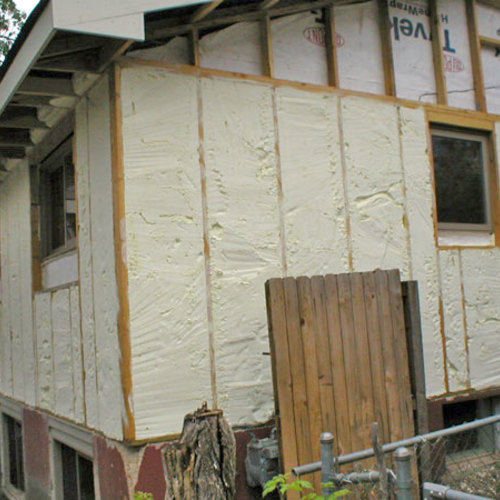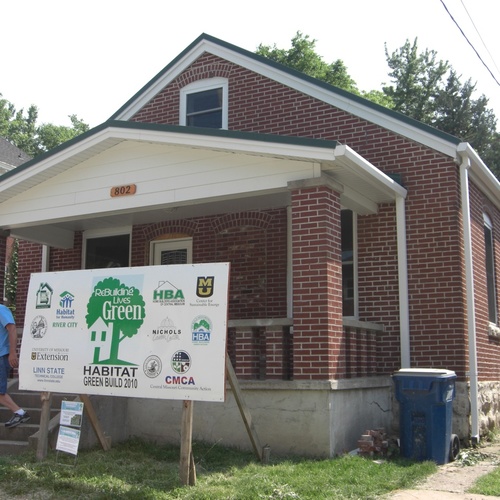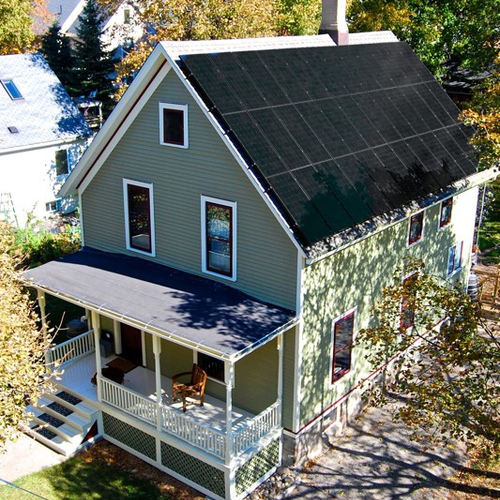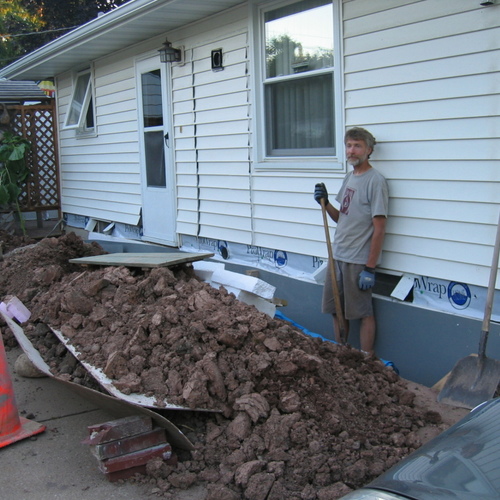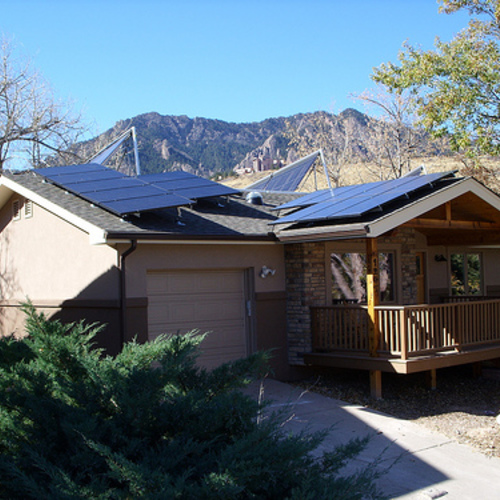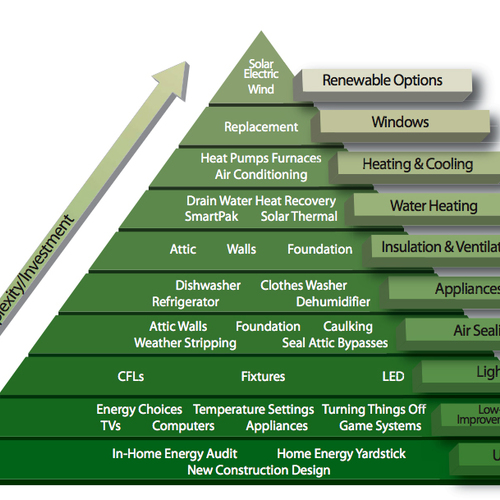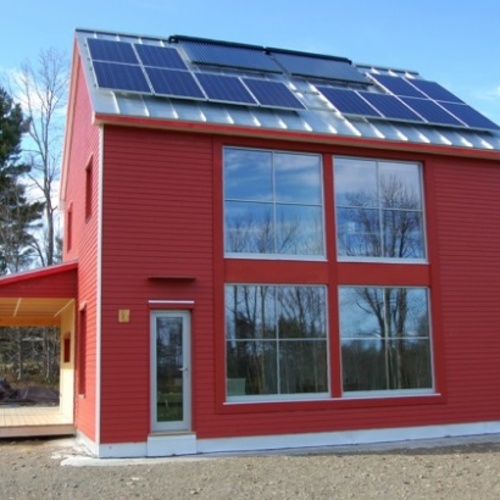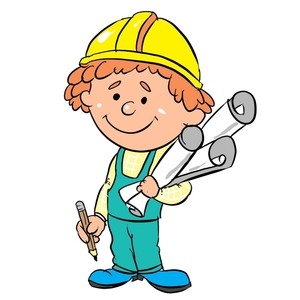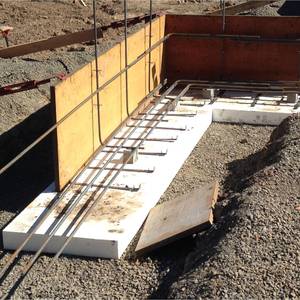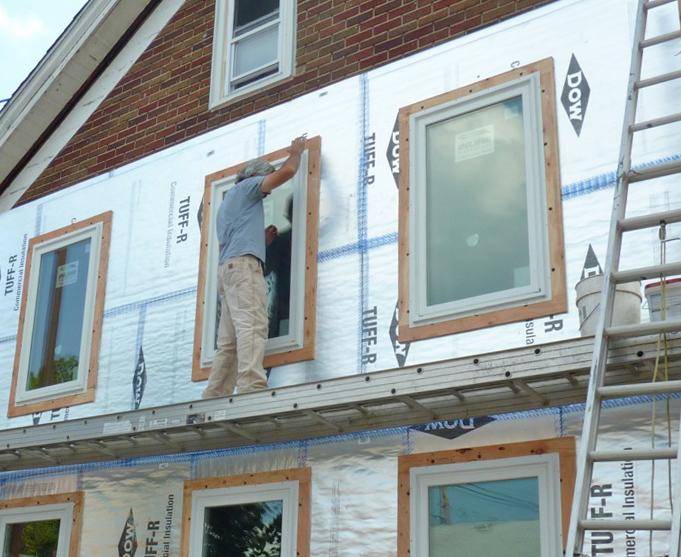
This is a list of the most important GBA articles on deep energy retrofits.
If you are looking for an index that spans all categories, with a special focus on “how to” articles, check out this resource page: “How to do Everything.”
-
Deep Energy Retrofits Are Often Misguided
All through the 1980s and 1990s, a small band of North American believers worked to maintain and expand our understanding of residential energy efficiency. These were the pioneers of the home performance field: blower-door experts, weatherization contractors, and “house as a system” trainers. At conferences like Affordable Comfort, they gathered to share their knowledge and lick their wounds. These pioneers understood what was wrong with American houses: They leaked air; they were inadequately insulated; they had bad windows; and their duct systems were a disaster.
-
The High Cost of Deep-Energy Retrofits
How much does it cost to perform a deep-energy retrofit at a 100-year-old single-family home? Thanks to a recent study in Utica, New York, we now know the answer: about $100,000. The research was sponsored by New York State Energy Research and Development Authority (NYSERDA), an agency that administers programs funded by public benefit charges tacked onto electric utility bills. The program paid for deep-energy retrofits at four wood-framed buildings in Utica, New York.
-
A Practical Look at Deep Energy Retrofits
Cutting a home’s energy use by 50% to 90% is a worthy goal, but the extreme costs keep it out of reach for many. We take a look at the most cost-effective alternatives. If you pay any attention to building science, you have probably seen the term “deep-energy retrofit” — a phrase being thrown around with the colloquiality of “sustainability” and “green.”
-
What Is a Deep Energy Retrofit?
I recently heard that a good blog is like a red party dress: long enough to cover the important parts, but short enough to maintain one's attention. By that measure, the Green Architects' Lounge podcast episodes are like royal wedding gowns with long trains that flow down the aisle. This is great if you like wedding gowns, but ... Because we feel that many short dresses are better than a single long one, we've decided to divide our episodes into smaller, more manageable parts, and release them with greater frequency. (Time to switch metaphors...)
-
Window Installation Tips for a Deep Energy Retrofit
In May 2011 we began a deep energy retrofit of our old, cold, drafty house in Saugerties, New York. Because the house was poorly and cheaply built in the 1840s (apparently from scraps and salvage), we were leery of opening up the walls from the outside, lest we find that the clapboard siding and incomplete sheathing were all that had kept the house from collapsing.
-
The History of the Chainsaw Retrofit
To achieve the carbon reductions needed to prevent a global ecological catastrophe, almost every house in North America will need a deep-energy retrofit. If the projecting elements on a home’s exterior — especially the eave and rake overhangs — can be stripped away, the best retrofit option is to wrap the exterior of the house with an airtight membrane and a deep layer of insulation, followed by new siding, roofing, and windows.
-
An Old House Gets a Superinsulation Retrofit
What started out as a relatively straightforward re-siding project on this 80-year-old duplex in Arlington, Mass., ultimately evolved into part of an ambitious superinsulation pilot program for the Massachusetts Department of Energy Resources (DOER) and the regional utility company, NSTAR.
-
Remodel Project: Deep Energy Retrofit
Insulation, Air Sealing, & HVAC Offer Chances to Slash Energy Bills Reductions of 50% to 90% are attainable
-
Deep-Energy Retrofits
Starting in the 1970s, following the first energy crisis, major weatherization programs were launched to tighten up American homes. The Weatherization Assistance Program of the U.S. Department of Energy, which focuses on low-income homes, has weatherized some 6.2 million dwellings, reducing energy consumption by an average of 32%, since its inception in 1976. State and local programs and private weatherization companies have weatherized tens of millions of additional homes.
-
Brand New Appearance and Performance for An Older Duplex
By Cador Price-Jones There are 120 million homes in America, and we need to figure out how to retrofit them for the new reality that we live in. We cannot all choose to move to the country and build a net-zero home and let someone else deal with the existing houses. A well made case for a new $150,000 “house coat”
-
Exterior Insulation over Masonry Cladding
How do you insulate an old building with exterior walls made of structural brick? The best approach, according to building science professor John Straube, is to install a continuous layer of exterior insulation. Straube told me, “It’s a great solution for ugly buildings.”
-
A True Net-Zero Gut Rehab, New England-Style
By Peter Yost and Martin Holladay Before retrofit work began, Jane Bindley's 1978 ranch house on the shore of Squam Lake was an ordinary fiberglass-insulated energy hog. Bindley had a dream: to turn her home in central New Hampshire into a net-zero-energy house. How hard could that be? As it turned out, pretty hard. But with help from a dedicated team of experts and a generous budget, Bindley achieved her dream. Can a north-facing house be net-zero?
-
A Leaky Old House Becomes a Net-Zero Showcase
Jane Bindley had a dream: to turn her 1978 ranch in central New Hampshire into a net-zero-energy house. How hard could that be? As it turned out, pretty hard. But with help from a dedicated team of experts and a generous budget, Bindley achieved her dream.
-
Solving an Ice Dam Problem With Exterior Rigid Foam
Because of improved product and installation methods, techniques to build new or remodel existing homes have advanced dramatically in the past few decades. In 2017, I used one of these innovations — continuous exterior insulation — to solve ice dam and heat loss issues of my seven-unit apartment building located in Pownal, Vermont.
-
Deep Energy Makeover: One Step At A Time
When my wife Chris and I bought this nearly 100-year-old home in 2000, we knew we had our work cut out for us: virtually no insulation; original single-pane windows; a failing main bathroom; just four circuits of knob-and-tube wiring; no laundry hook-up; and a dysfunctional 12x12 kitchen with three windows and four doorways.
-
More Job Site Visits in Maine
On my second day in Maine, I toured seven energy-efficient buildings in various stages of construction. In last week’s blog, I reported on my visit to Richard Renner’s office and Jesse Thompson’s house. This blog picks up the story with a report on my visit to three sites: an ongoing deep-energy retrofit project, a new home in Falmouth, and an unusual co-housing project. If you're the type of reader who prefers pictures to words, you're in luck: this week's blog is loaded with photos.
-
A Deep-Energy Retrofit in Northwest Vermont
The last time the three-bedroom home in Hinesburg, Vermont, saw extensive contractor attention was in the early 1970s, when the house was built. Recently, though, David Pill and his team at Pill-Maharam Architects, in Shelburne, Vermont, joined Conner & Buck Builders, of Bristol, to put the house through a deep-energy retrofit. As Pill noted in an email to GBA, the house was “the perfect candidate” for the transformation.
-
Jefferson City Deep Energy Retrofit
At face value, 802 West McCarty is nothing special, just one of 800 vacant or foreclosed homes in a distressed Jefferson City, MO urban neighborhood. But you don’t end up with the team listed to the right without creating something special indeed: the deepest green Habitat for Humanity (HFH) remodeling project in the Midwest. “We took it from the past 100 years and will be able to give it another 100 years of life,” says Ken Thoenen of Ken Thoenen Homes, the project chairman. Humble home, humble owners
-
Wrapping an Older House with Rock Wool Insulation
When I first met Chris Gleba and Kris Erickson in December 2011 to discuss their plans for a deep energy retrofit, Chris told me that he had been remodeling his modest two-bedroom house in Lowell, Massachusetts, for over ten years. He had painstakingly rewired and re-plumbed the house and had made energy efficiency improvements (including the installation of a high-efficiency natural gas boiler and radiant in-floor heating). He had also devoted much sweat equity towards upgrading the interior finishes of the kitchen and baths.
-
A Deep Energy Retrofit Using Nailbase Insulation Panels
Ted Clifton has been building and remodeling homes for more than 45 years. But he continues to recognize good innovations as they come along. That’s why he decided to use nailbase insulation panels on a recent green remodeling project for Bob and Tobie Johnson of Oak Harbor, WA. What is nailbase insulation?
-
Mission Zero House: A Net-Zero Retrofit
There really is nothing more challenging that I can think of than taking a home in a historic district and taking it to net zero energy. But it sure helps to start with the right home. Good bones When I asked Matt Grocoff, “Why this house?,” the first words out of his mouth were, “Good bones!” Despite the home’s age, the foundation and structure were sound.
-
A German Deep-Energy Retrofit
I recently visited a job site on the outskirts of Berlin that had previously caught my eye. Although the buildings were shrouded in the usual scaffolding and screening, I had noticed while biking by that the work involved “energetische sanierung,” or energy retrofitting.
-
The First Passivhaus Retrofit Certification in the U.S.
UPDATED on March 30, 2011 with a new link at the bottom of the page to a video of the project. The messy, retrofitting part is over. Now it’s time to track the performance of Cathy O’Neill’s 1960s-era home in Sonoma, California, which was expanded and renovated to the Passivhaus standard.
-
One Man’s Quest for Energy Independence — Part 1
In 1987, my wife and I purchased a one-story, 1,200-square-foot ranch with a basement in Appleton, Wisconsin. It had been built in 1960. Its 2x4 walls were filled with 3 inches of fiberglass batting; the house had single-pane windows. The basement slab had been poured directly onto clay without a gravel drainage base. There was sectional tile drain around the exterior perimeter and one sump. The house had a large patio door facing west and a bay window facing east, and only two windows on the south side.
-
From ‘Tea House’ to Tight House
By Doug Snyder In 2008, contractor Dwight Holmes went to work with homeowner Mary Sargent on a deep energy retrofit of her 1917 “Tea House.” Nestled into a hillside apple orchard in Vermont, the building was originally constructed as a private, summer-only, communal dining and entertainment hall with living quarters for servant help. The house included many doors and large single-pane French windows to allow summer breezes to pass through the building. While this is ideal for the summertime, maintaining a livable temperature indoors during Vermont winters was a challenge.
-
A 100-Year-Old Energy Star Home
Anders Lewendal likes to lead — he is president of his local homebuilder’s association and chairs its green building committee, sits on the Mayor’s Climate Control Task Force, and has had entries in the Bozeman Parade of Homes for seven of the last ten years. So when he decided to remodel a 100-year old period home in Bozeman, Montana, it had to be a gut rehab shooting for an Energy Star label. This is no mean feat — there are only a handful of these projects in the entire Northwest. A brief history of 711 North Black
-
Michigan’s First LEED Platinum Gut-Rehab
Doug Selby of Meadowlark Builders and Michael Klement of Architectural Resource are experienced at energy-efficient remodeling. Working as a team, Selby and Klement were the first in Michigan to grab a LEED Platinum rating for a gut-rehab job.
-
1970s Home Goes Net Zero
Intensive renovation has made this modest ranch house in the suburbs of Boulder, Colorado, an example of what all green builders strive for — a net zero energy home. Changes include an extreme insulation retrofit, a 6kW photovoltaic array installed on the roof, and an evacuated-tube solar hot water system.
-
Foam Shrinks, and Other Lessons
What we learned from updating a 16-year-old deep-energy retrofit by Joseph Lstiburek
-
Extending Window Openings for a Deep Energy Retrofit
A few weeks ago I reported on the amazing, high-tech Alpen, R-12 (center-of-glass) windows that we installed on the north and west facades of our farmhouse in Dummerston, Vermont. At that time I promised to report on the other windows we were installing on the south and east facades (windows 2.0 if you will).
-
-
-
-
What Is a Deep Energy Retrofit?
I recently heard that a good blog is like a red party dress: long enough to cover the important parts, but short enough to maintain one's attention. By that measure, the Green Architects' Lounge podcast episodes are like royal wedding gowns with long trains that flow down the aisle. This is great if you like wedding gowns, but ... Because we feel that many short dresses are better than a single long one, we've decided to divide our episodes into smaller, more manageable parts, and release them with greater frequency. (Time to switch metaphors...)
-
Deep Energy Retrofit: Focus on the Envelope
This is part two of the Green Architects' Lounge three-part series on deep energy retrofits. In this episode, Phil and I discuss what we believe is the most crucial part of a DER: the exterior building envelope. There is no single solution. Here, we must be nimble and thoughtful, and deal with the structure that we're given and apply the skills we've learned (and by we, I mean all of you listeners as well).
-
Deep Energy Retrofit: Apply the Energy Efficiency Pyramid
This is the last installment in the Green Architects' Lounge trilogy on deep energy retrofits. In this episode, Phil and I discuss the importance of sizing your new HVAC system to the heat load of your newly renovated house. (This is where that energy audit information, which we mentioned in previous episodes, is going to come in handy.)
-
The Big Rewards of a Deep Energy Retrofit
I have long advocated for deep energy retrofits; as we developed the resilient investing system, this became an obvious activity promoting tangible assets close to home. “Remodel your house so that it uses dramatically less energy,” I’d proclaim. “It’ll be more comfortable, and you can save money and the planet at the same time!” Experts like McKinsey & Company assured me that insulation and heating systems pay off very quickly. After two years of actually tackling it at our house, the practicalities are — surprise! — a bit more complicated.
-
Number Crunching on a Deep Energy Retrofit
Christopher Peck's original post, The Big Rewards of a Deep Energy Retrofit, was published here on March 15, 2016. That blog and this one both originally appeared at The Resilient Investor.
-
All About Larsen Trusses
A Larsen truss is a type of wall truss used to build a thick wall — thick enough to provide room for above-average amounts of insulation. It was developed in 1981 by John Larsen, a builder in Edmonton, Alberta. In honor of the 30th anniversary of the Larsen truss, the time has come for a definitive article on the invention. This report includes an interview with the inventor of the Larsen truss, a history of its use, and a discussion of its advantages and disadvantages.
-
Study Shows That Expensive Windows Yield Meager Energy Returns
An architectural cliché from the 1970s — the passive solar home with large expanses of south-facing glass — is making a comeback. In recent years, we’ve seen North American designers of Passivhaus buildings increase the area of south-facing glass to levels rarely seen since the Carter administration. What’s the explanation for all this south-facing glass? We’re told that there’s no other way for designers to meet the energy limit for space heating required by the Passivhaus standard: namely, a maximum of 15 kWh per square meter per year.
-
Learn the Real (Hard) Work of Residential Design
I don’t sit in a hotel room in Boston for two days in the middle of winter, just to have someone tell me how everything worked out just as they planned. The truth is much more entertaining, a lot more flawed, and a lot more useful to me as a professional. Residential design is difficult work. With few exceptions, every client is an amateur. Every design is a testament to who the client thinks she ought to be. Every project is a wrestling match between the things he always wanted and the ones he can afford. The work is not easy.
-
Making an Old Tract House Sunnier and More Efficient
In 1983, the Heron was one of five cookie-cutter models offered in Bay Country, a tract housing development in a suburb of Baltimore, Maryland. Perhaps a little ahead of its time, the design featured walls with 1-inch-thick expanded polystyrene (EPS) insulation over the standard 2x4 walls filled with fiberglass batts.







